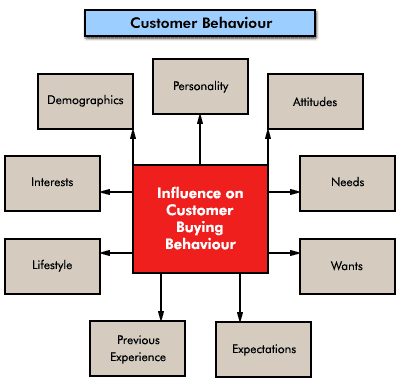
Setting Sales & Service Targets Plans
Meeting Your Customer's Needs
Understanding and meeting your customer's needs will improve your store's sales performance. By identifying and examining your customer base, you are able to develop the necessary strategies to supply the goods that they want and need.

As a manager you need a knowledge of:
- Influences on customer behaviour
- The characteristics of your competition
- Market trends.
To develop this understanding and the relevant strategy, you need skills in:
- Collecting
- Analysing
- Organising information
|
The two key steps to meeting your customer's needs are: 1.
Research and analyse your customer's needs. |
Researching and Analysing Your Customer's Needs
The aim of satisfying customer needs is to ensure that the products and services you offer meet your customer's expectations. Many retailers offer a range of products that they believe the customer will be interested in. Sometimes this belief is right and sales flow, but often this belief is incorrect and customers either reluctantly 'settle' for the product on offer or they take their business elsewhere.
The key question for every retailer should be:
Is my product range based on reliable customer information or on my 'gut feeling' of what my customers will like?
 |
| Retail success is based on providing the range of products that meet the customers expectations. Knowing your customers is the first step. |
To ensure that your customers buy what they want, not what you are offering, it is essential that you know your market. This knowledge enables you to make informed decisions about your store's :
|
|
|
For more information on target marketing see the unit 'Manage Merchandise and Store Presentation'.
Developing a sound marketing strategy depends on how well you identify and understand your customers.
Consumer characteristics and needs are identified by:
- Demographics. (Identifiable and measurable population statistics.)
- Life-styles. (How your customers spend their time and money.)
This information enables you to develop a profile of your target market by combining these factors. This information enables you to identify what the focus of your marketing efforts should be and then develop strategies to satisfy your customer's identified needs and expectations.
|
|
|